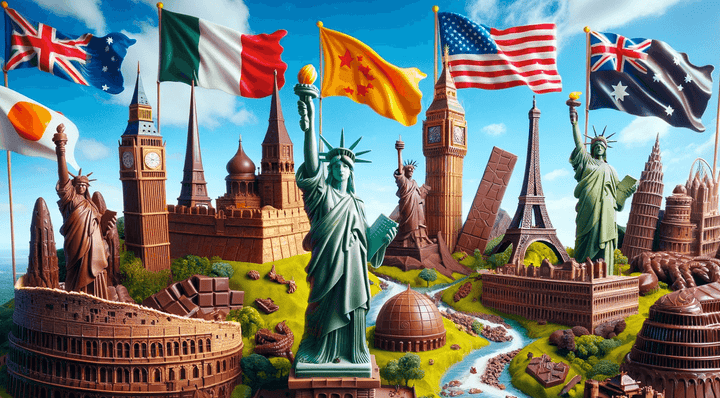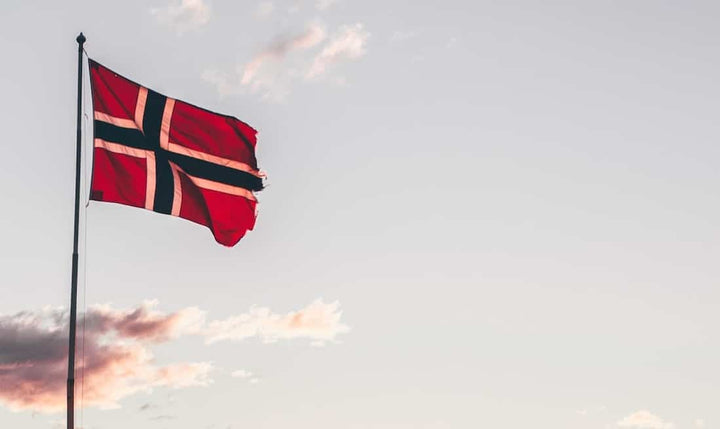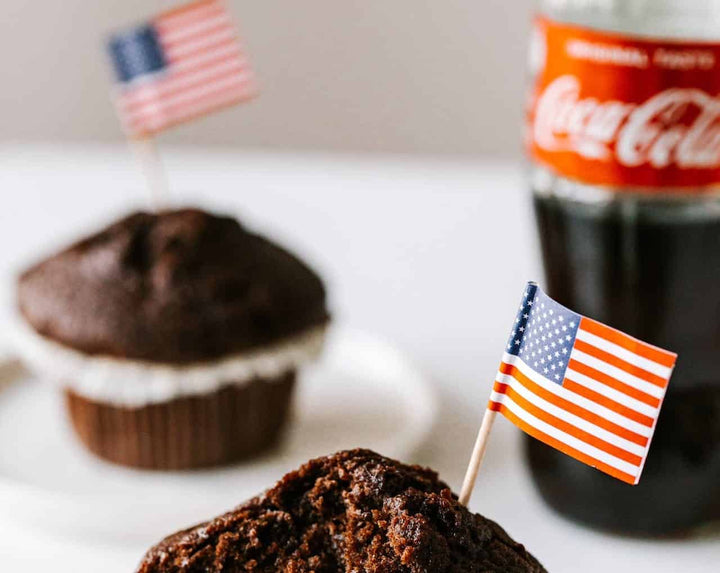With Greenland's unique geographical and political position, and in the context of the UK's recent departure from the European Union, understanding the regulations surrounding the transport of such goods becomes crucial.
This post aims to unravel the complexities of carrying chocolate from the UK to Greenland, offering insights into customs regulations, food safety standards, and import restrictions.
Can I Take Chocolate to Greenland From the UK?
You can take chocolate from the UK to Greenland.
However, there are several considerations to remember due to Greenland's unique position both geographically and in terms of its political and import regulations.
Here are some key points to consider:
-
Customs Regulations: Greenland is an autonomous territory within the Kingdom of Denmark with its own customs rules. While it's part of the Kingdom of Denmark, it is not part of the European Union. Therefore, you must comply with Greenland's specific customs regulations, which include declaring certain items upon arrival.
-
Personal Consumption: If the chocolate is for personal use, such as gifts or your consumption during your stay, you generally won't face any issues. Ensure that your quantity is reasonable and aligns with what is considered for personal use.
-
Commercial Import: If you are bringing chocolate into Greenland for commercial purposes, the regulations are different, and you might need to adhere to additional customs, tax, and food safety requirements.
-
Food Safety Standards: Ensure that the chocolate is commercially packaged. Greenland may have specific standards for food safety and import, and it’s important that any food items, including chocolate, comply with these.
-
Duty-Free Allowance: Be aware of Greenland’s duty-free allowance for imported goods. If the value of the chocolate exceeds this allowance, you might have to pay customs duty.
-
Agricultural Restrictions: While chocolate is typically not subject to agricultural restrictions, it’s always good practice to check any current restrictions that might be in place, mainly if the chocolate contains certain ingredients like dairy.
-
Check Latest Regulations: Rules can change, so it’s advisable to check the latest guidelines from Greenland’s customs authorities or the UK government’s travel advice for Greenland before your trip.
Staying informed with the latest rules will help ensure a smooth experience at customs.
 The Flag of Greenland
The Flag of Greenland
Can You Send Chocolate to Greenland by Post from the UK?
You can send chocolate from the UK to Greenland by post, but it's essential to comply with UK and Greenlandic customs regulations.
Ensure the chocolate is commercially packaged, and be prepared for potential customs declarations and duties, especially if sending large quantities.
It's advisable to stay informed about any changes in regulations due to Brexit, as they can affect sending food items internationally.
Let's look at the details:
-
Customs Regulations: Greenland has its own customs regulations as an autonomous territory within the Kingdom of Denmark and is not part of the European Union. You'll need to comply with these regulations, including accurately declaring your package's contents and value on a customs declaration form.
-
Duties and Taxes: The recipient in Greenland may need to pay import duties and taxes on the chocolate, depending on its value. It's essential to check the current duty-free threshold for Greenland to understand if these charges will apply.
-
Packaging and Preservation: Chocolate must be well-packaged to prevent damage during transit, particularly considering Greenland's colder climate. Insulated packaging or cold packs might be necessary, especially if you send chocolate during colder months.
-
Prohibited and Restricted Items: Before sending, check the UK postal service and Greenlandic customs guidelines for any restrictions on sending food items like chocolate.
-
Postal Service Restrictions: Different postal carriers have their own rules and limitations regarding international shipping. It's essential to check with your chosen postal service for any specific guidelines or restrictions.
-
Declaration of Ingredients: For food items, including chocolate, you may need to declare the ingredients, particularly for recipients with dietary restrictions or allergies.
-
Insurance and Tracking: Opting for shipping insurance and tracking services can provide security and peace of mind.
-
Keep Receipts and Transaction Records: Keeping receipts and records of your transaction can be helpful in case of any customs or postal service queries.
Did Brexit Change the Rules About Taking Food into Greenland?
Brexit has changed the rules about taking food from the UK into Greenland.
Before Brexit, the UK, as a member of the European Union, had different arrangements for moving goods, including food items, to countries within the EU and associated territories.
However, new rules and regulations have applied since the UK's exit from the EU.
Here are the fundamental changes for taking food into Greenland post-Brexit:
-
Customs Declarations: Travellers from the UK to Greenland now need to declare certain items at customs, including various types of food. This is especially relevant for products of animal origin.
-
Restrictions on Animal Products: There are stricter controls on bringing products of animal origin, such as meat and dairy products, into Greenland from the UK. This can include items like cheese, milk, meat, and products containing these ingredients.
-
Personal Use and Limits: The rules regarding personal use and the limits on quantities have become more stringent. Travellers need to ensure that the amount of food they carry is reasonable for their stay and for personal consumption.
-
Duty and Taxation: There may be changes in duty-free allowances and taxation on goods brought into Greenland from the UK. It’s advisable to check the latest allowances and potential taxes that could be levied on food items.
-
Health and Safety Regulations: The UK and Greenland may have different health and safety regulations for food. Ensuring that any food taken into Greenland complies with local standards is essential.
-
Documentation: Depending on what you're carrying, you might need to provide additional documentation or adhere to specific packaging and labelling requirements.
These changes mean that travellers from the UK to Greenland need to be more mindful about their food items.
It's always recommended to check the latest regulations from official sources like the Greenland government or the UK's travel advice for Greenland before travelling, as rules can change.

Do You Have to Declare Food When Travelling From the UK to Greenland?
When travelling from the UK to Greenland, it is often necessary to declare food items.
Greenland, although an autonomous territory within the Kingdom of Denmark, has its own customs regulations, which have been impacted by the UK's departure from the European Union (Brexit).
Here are the key points to consider:
-
Customs Declaration: Upon arrival in Greenland, you are typically required to go through customs and declare certain items, including various types of food. This is particularly important for products of animal origin (such as meat and dairy) and certain other restricted or regulated items.
-
Duty-Free Allowance: Greenland has specific limits on the quantity of certain food items that can be brought into the country without incurring taxes. It's important to know these limits and declare any items that exceed them.
-
Personal Consumption: The rules are usually more lenient if the food items are for personal use, such as gifts or personal consumption during your stay. However, it's still advisable to declare these items to avoid any issues at customs.
-
Agricultural Restrictions: Some foods, especially fresh fruits and vegetables, may be subject to agricultural restrictions. These rules are in place to prevent the spread of pests and diseases. Failure to declare restricted items can result in fines or other penalties.
-
Recent Changes: Given the changes post-Brexit, it's always a good practice to check the most current guidelines from official sources such as the Greenlandic Directorate of Customs and the UK government's travel advice for Greenland before travelling.
While not all food items need to be declared when travelling from the UK to Greenland, it's essential to be aware of the items that do require declaration and the permissible quantities without incurring taxes or violating customs regulations.
What Foods Can You Not Take From the UK into Greenland?
When travelling from the UK to Greenland, there are certain restrictions on the types of foods you can bring, particularly following the UK's departure from the European Union.
Greenland, while part of the Kingdom of Denmark, has its own customs regulations.
Here are the types of foods generally not allowed or subject to strict limitations:
-
Meat and Meat Products: Fresh or processed meat and products containing meat are usually prohibited or subject to strict controls.
-
Dairy Products: This includes milk, cheese, butter, and other dairy products, as well as foods containing these ingredients. There are stringent regulations for bringing these items into Greenland.
-
Fish and Seafood: There might be limited quantities and specific conditions for bringing fish and seafood products.
-
Fruits and Vegetables: Certain fresh fruits and vegetables may be restricted due to concerns about spreading pests and diseases. Pre-packaged and processed products are generally less restricted.
-
Eggs and Egg Products: Restrictions apply to eggs and products containing eggs.
- Pet Food: Particularly if it contains meat or dairy products, pet food may be subject to restrictions.
-
Honey and Honey Products: There can be limitations on bringing these into Greenland due to disease control measures.
It's important to note that while these are general guidelines, regulations can change, and there may be exceptions based on current health and agricultural policies.
Where Can You Buy Tasty UK-Made Chocolate?
Whitakers Chocolates, renowned for our long history in crafting delicious and affordable chocolates, offers a range of options suitable for everyone, including vegetarian, vegan, and gluten-free choices.
Our top-selling products, such as indulgent Coffee Creams, Neapolitans, Chocolate Wafer Thins, Stem Ginger and Luxury Chocolate Truffles, are perfect for enhancing your mocha coffee experience.
Click here to see our full range of delicious chocolates...
Some Notes From an Expert Chocolatier
As an expert chocolatier with experience exporting our products to various countries, I have gained valuable insights into the complexities and rewards of international trade in the confectionery sector.
Taking our chocolates beyond national borders has been both challenging and exhilarating, offering a unique opportunity to showcase our craftsmanship on a global stage.
Participating in international trade fairs and expos has been crucial to our export journey.
These events are a platform to introduce our chocolates to new markets, connect with potential buyers, and gain exposure to diverse tastes and preferences.
Navigating different countries' import regulations, especially for food products, requires diligence and adaptability.
Each country has its own set of rules concerning food safety, labelling, and packaging, which we must meticulously comply with to ensure smooth entry into these markets.
Building relationships with local distributors and retailers has been fundamental in establishing our presence in new markets.
These partnerships are crucial for navigating distribution logistics and gaining insights into consumer behaviour and trends in different regions.
Final Notes On Taking Chocolate to Greenland From the UK After Brexit
Taking chocolate from the UK to Greenland post-Brexit is possible, but it requires compliance with new regulations following the UK's departure from the European Union.
Key aspects include declaring any chocolate upon arrival, especially if carrying amounts that might seem more than for personal use.
It's essential to be aware of duty-free allowances and any potential customs duties for exceeding these limits.
Chocolate must be commercially packaged to meet food safety standards.
Staying informed about regulatory changes is essential, as they can impact what can be brought into Greenland.
These considerations are similar to sending chocolate to Greenland by post.
Despite Brexit's additional complexities, proper planning and adherence to regulations can enable a smooth experience in sharing or enjoying chocolate in Greenland.











